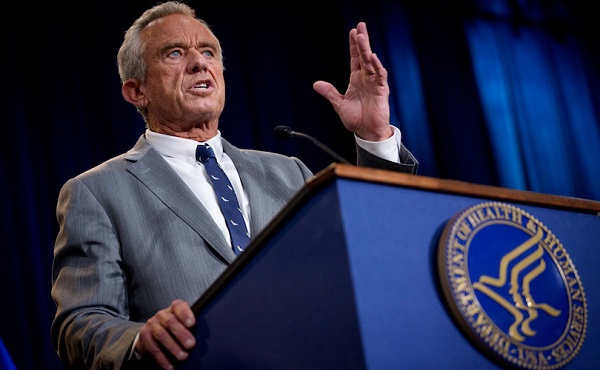National
Trudeau appoints a member of the Trudeau Foundation to investigate donations to the Trudeau Foundation – PPC leader Maxime Bernier
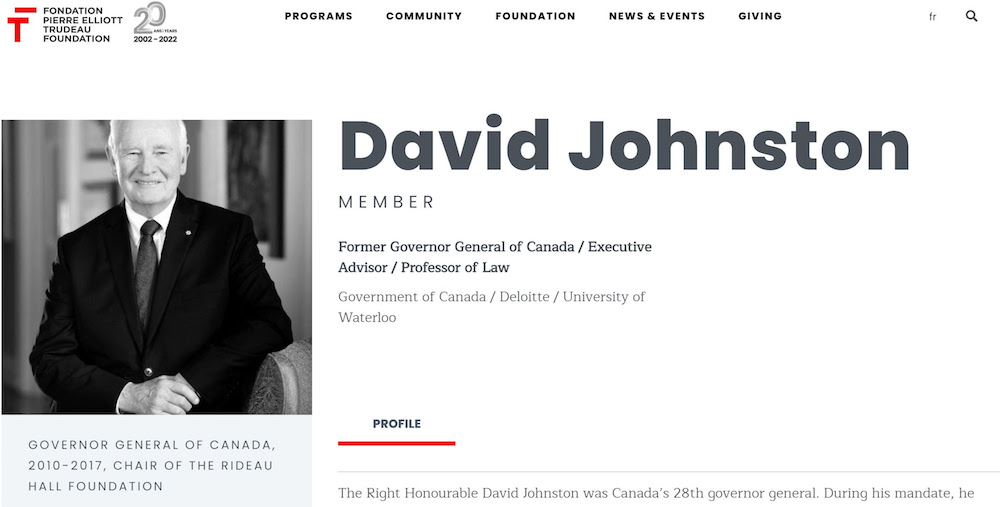
While opposition parties form positions on the Prime Minister’s appointment of former Governor General David Johnston as his Special Rapporteur, PPC Leader Maxime Bernier is expressing extreme outrage.
In this newsletter Bernier is using to both spread the news, and to raise money, Bernier points out just how closely tied the Trudeau family is to the former Governor General.
Another day, another example of Liberal corruption in Trudeau’s government.
To address increasing concerns around Chinese interference in our elections, Justin Trudeau said earlier this week that he would appoint a “special rapporteur”—whatever that means—to conduct an investigation.
Yesterday he announced he would be appointing former Governor General, David Johnston, to this position.
Trudeau is describing Johnston as a “Harper appointee” to try and make it seem like an impartial appointment when in reality it is anything but.
Johnston is a standing member of the Trudeau Foundation, the charity that accepted a $200,000 donation from the Chinese Communist Party laundered through a Chinese Canadian businessman.
Is this for real? Trudeau appoints a member of the Trudeau Foundation to investigate interference which involved donations to the Trudeau Foundation?!
It’s a clear conflict of interest!
To make things even more suspect, on multiple occasions, Trudeau has lovingly described Johnston as a “family friend,” having grown up alongside Johnston’s children.
Don’t believe me? Listen to Trudeau describe their relationship!
More recently, Johnston has been the Commissioner of the Leaders’ Debates Commission since it was established in 2018.
An organization whose mandate is to interfere with our elections!
As Commissioner, Johnston was responsible for trying to exclude dissident media organizations, like Rebel Media and True North, from covering the debates and holding the party leaders to account.
He was responsible for the absurd debate formats designed to protect the establishment narrative.
He was also responsible for wrongly excluding me from the debate stage during the 2021 election!
This was at the height of the covid craziness, when having me on national television would have completely destroyed the mainstream narrative.
This is the man who’s supposed to investigate interference in our election?
It’s absurd, but I can’t say I’m surprised. Canada under Trudeau has quickly become a corrupt banana republic.
We saw the exact same playbook with the Freedom Convoy Inquiry.
- Trudeau appoints a compromised individual to oversee things.
- They delay and push things back to allow public pressure to fall.
- Trudeau’s bought and paid for media runs cover for the establishment narrative.
- The commissioner/special rapporteur finds nothing is wrong and the conflict is swept under the rug.
This is absolutely unacceptable behaviour on Trudeau’s part! He continues to make a mockery of our democratic institutions.
The level of corruption and incompetence we’ve seen from this government is unprecedented.
Duane, we need to clean the house. We need to vote out every one of these corrupt, career politicians and fill the House of Commons with honest PPC MPs who will put the interests of Canadians first.
Help me accomplish this mission with a $10 donation today!
Thank you so much for your support,
-Max
P.S.: If you have trouble finding where you can donate, you can just click this link! https://www.
Business
Carney praises Trump’s world ‘leadership’ at G7 meeting in Canada
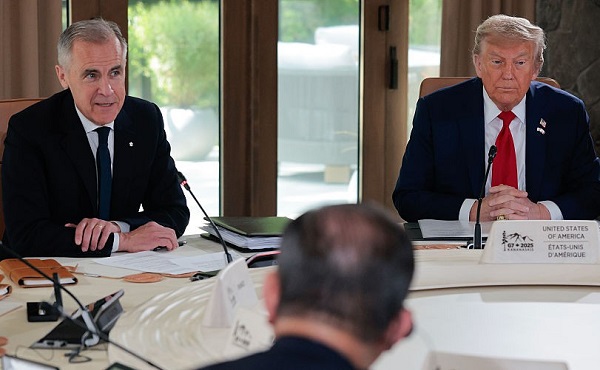
From LifeSiteNews
Canada’s prime minister said it was a ‘great honor’ to host the U.S. president and praised him for saying Canada wants to work with the U.S. ‘hand-in-hand.’
During the second day of the G7 leaders meeting in the Kananaskis area in Alberta, Canadian Prime Minister Mark Carney praised U.S. President Donald Trump’s world “leadership” despite saying many negative things about him during his election campaign.
While speaking to reporters Monday, Trump hinted that a new trade deal between Canada and the United States was potentially only “weeks” away. This came after a private meeting with Carney before the official G7 talks commenced.
“We’ve developed a very good relationship. And we’re going to be talking about trade and many other things,” Trump told reporters.
Carney was less vocal, however. He used the opportunity to tell reporters he was happy Trump came to his country for the G7 meeting, saying it was a “great honor” to host him.
“This marks the 50th birthday of the G7, and the G7 is nothing without U.S. leadership,” Carney told reporters.
He then spoke about Trump’s “personal leadership” on world issues and praised him for saying Canada wants to work with the U.S. “hand-in-hand.”
Carney ran his election campaign by claiming the Conservative Party would bow to Trump’s demands despite the fact that the party never said such things.
During his federal election campaign, Carney repeatedly took issue with Trump and the U.S. that turned into an anti-American Canadian legacy media frenzy.
However, the reality is, after Carney won the April 28 federal election, Trump praised him, saying, “Canada chose a very talented person.”
Many political pundits have said that Carney owes his win to Trump, as the U.S. president suggested on multiple occasions that he would rather work with Carney than conservative leader Pierre Poilievre.
Trump has routinely suggested that Canada become an American state in recent months, often making such statements while talking about or implementing trade tariffs on Canadian goods.
As for Carney, he has said his government plans to launch a “new economy” in Canada that will involve “deepening” ties to the world.
Business
Carney’s Honeymoon Phase Enters a ‘Make-or-Break’ Week
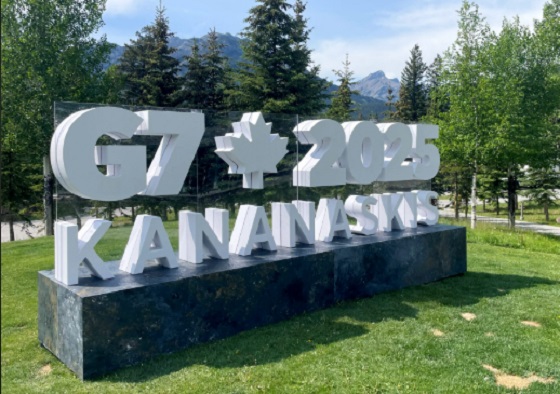
From the National Citizens Coalition
The National Citizens Coalition (NCC) is sounding the alarm on a critical week for the Carney government, which, despite enjoying an unearned honeymoon in the polls, has delivered zero results for everyday Canadians. As the G7 summit looms large and the House of Commons prepares to adjourn, this is a make-or-break moment for Prime Minister Mark Carney to prove his government is more than empty promises. Canadians are watching, and the NCC is calling out the glaring failures that threaten a grim summer of economic decline, and continued crime, chaos, and rising unemployment.
Housing Minister Gregor Robertson Caught in $10.85 Million Scandal
Recent revelations from Blacklock’s Reporter expose Housing Minister Gregor Robertson’s attempt to conceal $10.85 million in personal property investments during Commons questioning. This shocking lack of transparency from the minister tasked with addressing Canada’s housing crisis raises serious questions about his integrity and ability to prioritize Canadians struggling with skyrocketing costs. While Robertson dodges accountability, and Carney apparently scoffs at providing housing relief to millions suffering under a Liberal-made crisis, young professionals and young families are wondering if they’ll ever have a chance to own a home bigger than Canada’s much-maligned supply of ‘dog-crate condos.’
The NCC demands a full ethics investigation, the resignation of Gregor Robertson — who, as one of the architects of the Vancouver housing crisis, should have never been handed this file to begin with — and immediate action to restore trust in this critical portfolio.
Pipeline Delays and Provincial Obstruction Threaten Economic Growth
The Carney government’s inaction on pipelines is stalling Canada’s economic potential. Despite promises of “nation-building projects,” British Columbia and Quebec continue to block and veto critical energy infrastructure, with Carney failing to assert federal leadership. His vague talk of “consensus” and “decarbonized” barrels has led to zero progress, leaving Alberta’s economy in limbo and Canadians facing higher energy costs. With no clear plan to advance projects, the government is squandering opportunities to create jobs and secure energy sovereignty. The NCC urges Carney to act decisively this week to break the provincial logjam and deliver results.
Immigration Chaos: Lena Diab’s Unchecked Honour System Fails Canadians
Immigration Minister Lena Diab’s reliance on an ‘honour system’ for millions of temporary visitors with expiring visas is a recipe for disaster. As Canada grapples with unsustainable immigration levels, Diab’s apparent plan for millions of temporary workers and failed ‘diploma mill’ attendees assumes compliance without enforcement, ignoring the high-propensity for fraud, and the ongoing and urgent strain on housing, healthcare, and public services. The Liberals’ Strong Borders Act promises reform, but its loaded with unnecessary overreach and vague measures.
A lack of urgency leaves Canadians vulnerable to further crime, chaos, closed emergency rooms, high rents, and failing infrastructure. With immigration continuing to spiral out of control, the NCC calls for concrete action to drastically lower immigration targets, expedite deportations, and prioritize Canadian citizens and the record amounts of unemployed before the House adjourns.
Canadians Deserve Results, Not More Hollow “Elbows up” or “Team Canada” Rhetoric
This week’s G7 summit in Alberta and the impending House adjournment are the Carney government’s last chance to show leadership, before an undeserved summer break for a government that will be overseeing deepening economic decline, rising crime under a refusal to tackle catch-and-release bail, and growing unemployment. Canadians cannot afford another season of unfulfilled promises and unchecked crises. The NCC demands Carney use the G7 platform to secure trade stability, meaningful energy deals with our allies, and table a federal budget to address the cost-of-living crisis made worse by inflationary Liberal spending. Failure to act now will cement an early legacy of inaction and leave Canadians to endure a prolonged period of hardship.
“The Carney government’s honeymoon has been built on hype, not results,” says NCC Director Alexander Brown. “From Gregor Robertson’s hidden millions, to stalled pipelines, to an immigration system in continued disarray, Canadians — and particularly young Canadians — are being let down. This week is Carney’s chance to prove he can deliver beyond the lies that were told to placate a portion of the electorate at the polls. If he fails to act, the economic decline, the crime and chaos, will only worsen, and everyday Canadians will pay the price.
“True Canadian leaders like Alberta Premier Danielle Smith are in attendance at the G7 along with Carney. If actual acts of ‘nation-building,’ and not more net-zero de-growth, do not come naturally to the PM, he should turn to those who have never wavered in their quest to make life more affordable for the hard-working citizens they are privileged to represent, and who know when to get out of the way to allow Canadians to prosper. More of the same internal, ideological sabotage from the Liberals cannot ruin this dire moment for Canada’s rebirth and recovery.”
The NCC calls on all Canadians to hold the Carney government accountable. Join us in demanding transparency, action, and results before the House adjourns and the G7 summit concludes. Together, we can fight for a stronger, more prosperous Canada.
About the National Citizens Coalition: Founded in 1967, the NCC is a non-profit organization dedicated to advocating for individual freedom, lower taxes, less government waste, and a stronger Canada. We hold governments accountable and fight for the interests of everyday Canadians.
-

 Business2 days ago
Business2 days agoEU investigates major pornographic site over failure to protect children
-

 Canadian Energy Centre2 days ago
Canadian Energy Centre2 days agoCross-Canada economic benefits of the proposed Northern Gateway Pipeline project
-
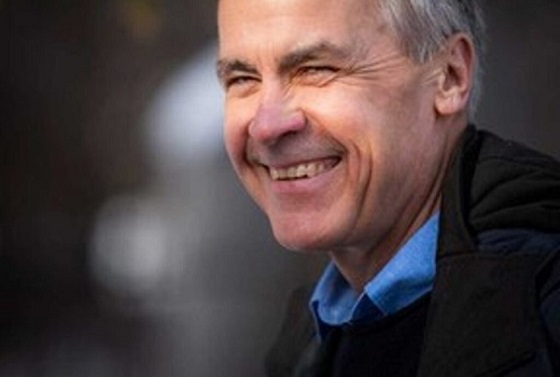
 Economy2 days ago
Economy2 days agoCarney’s Promise of Expediting Resource Projects Feels Like a Modern Version of the Wicked Stepmother from Disney’s Cinderella
-

 Alberta2 days ago
Alberta2 days agoAlbertans need clarity on prime minister’s incoherent energy policy
-

 conflict16 hours ago
conflict16 hours ago“Evacuate”: Netanyahu Warns Tehran as Israel Expands Strikes on Iran’s Military Command
-

 Energy16 hours ago
Energy16 hours agoCould the G7 Summit in Alberta be a historic moment for Canadian energy?
-

 Alberta1 day ago
Alberta1 day agoAlberta’s grand bargain with Canada includes a new pipeline to Prince Rupert
-

 Health20 hours ago
Health20 hours agoLast day and last chance to win this dream home! Support the 2025 Red Deer Hospital Lottery before midnight!






